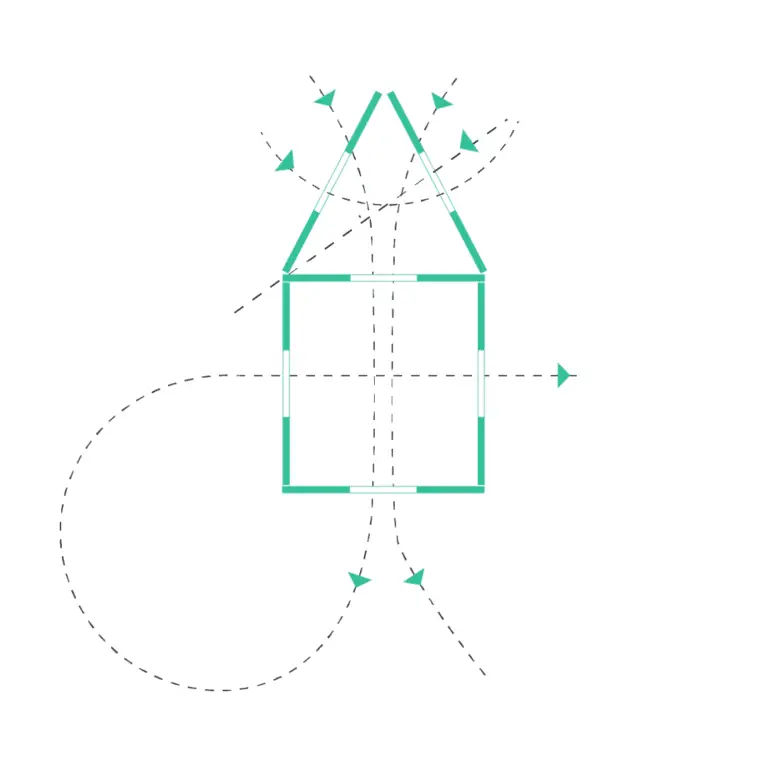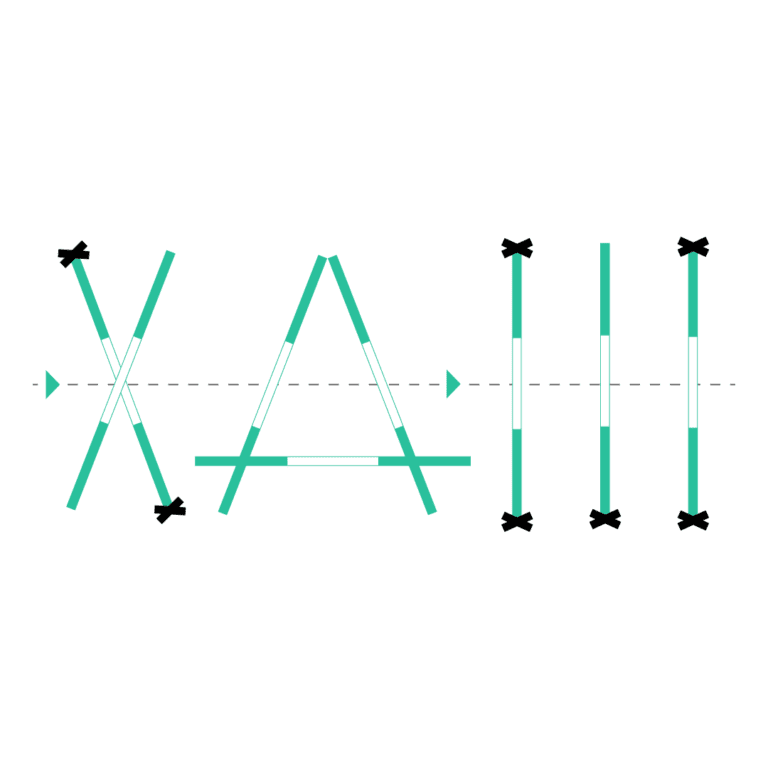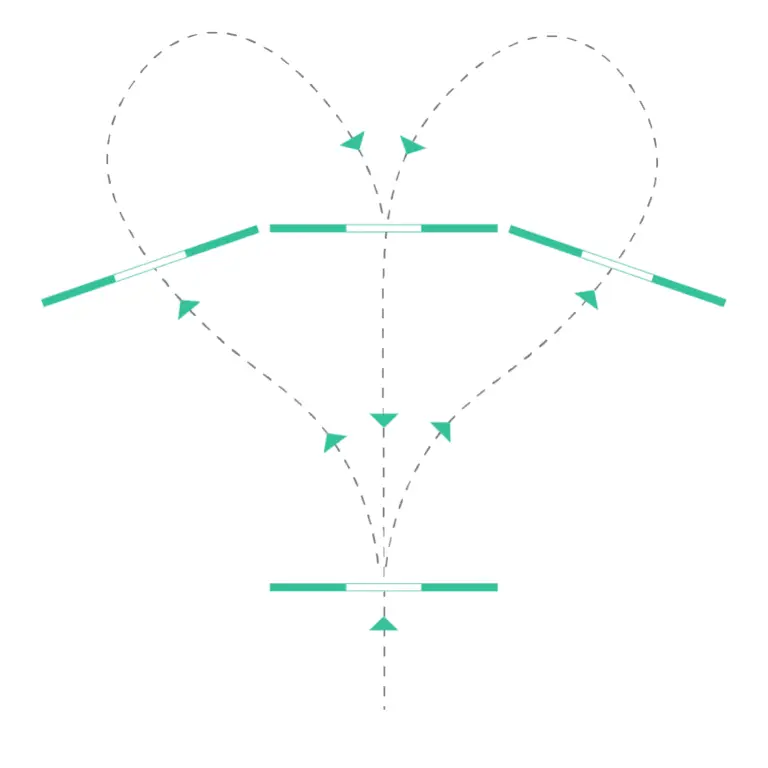
Distances for Pole Work and Jumping Grids
Do you want to set up poles or a small course, but don’t know how

Add variety and creativity to your training routine with these 7 exercises.

Poles for transitions is the ultimate combination of serpentines, trot poles, and canter poles.
Position 4 trot poles with a distance of 1.30 meters between them along one long side. The four poles should be placed at least on the second or third track, so that you can cross the poles on a curved line.
On the opposite long side, as shown in the picture, place a single canter pole on the second or third track. You can cross this canter pole on a straight line or on a circle.
Next, set up the remaining four poles on both short sides.
Place two canter poles on one short side with a distance of 3 meters between them.
On the second/third track of the opposite short side, set up two trot poles that are approximately 1.30 meters apart. This exercise promotes engagement of the hindquarters, flexion, and bending.
Tip: You can also raise individual poles with cavaletti blocks.
Have fun riding the exercise!

Grab 6 poles and let’s get started!
Build four poles in a square shape as shown and place the remaining two poles as a roof on one of the four sides.
You can ride this exercise in trot or canter on various paths, thus training flexion, bending, and engagement of the hindquarters.
Optionally, you can raise some poles with cavaletti blocks to customize the house.
Moving on to exercise number 3, the

This exercise is particularly good for the hindquarters, suppleness, and attentiveness of your horse.
The Trot Pole Alertness-exercise is very simply constructed. You need poles for an X, an A, and three I’s – so XAIII. That’s our pattern.
Start with the X. To do this, cross two poles in the shape of an X – one flat on the ground, the other raised on two cavaletti blocks above it.
Now for the A: Place two poles at an acute angle to each other on the ground, so that you can place another pole as the line of the A on top of the poles. The X and the A are now complete.
Finally, add three trot poles, with the outer two raised on both sides and the middle one raised on one side only.
Now everything is set up!

6 poles and just as many ways to ride this exercise: the triangle.
Set up a triangle using three poles, and position the remaining three poles on each side. The distance between the triangle and the trot pole should be 1.10 to 1.30 meters.
This exercise is ridden at a trot. Try to find as many paths as possible and train rhythm, attentiveness, flexion, and bending.

The Switch it up is the ideal exercise to promote flexion, bending, responsiveness, and control.
To set it up: Form a square by placing two poles at a right angle to each other in each corner. And you’re done! Not that complicated, right?
Now, ride a figure-eight as shown in the picture and use the poles in the corners as points of reference.
Here are two variations: Ride a transition in the center of the figure-eight when changing reigns. You can ride voltes around the poles. Have fun trying it out!
Have fun trying it out!

Do you want more attentiveness and suppleness? Then the heart is perfect for you!
Just 4 poles and let’s go!
Two poles are placed in a straight line, and the other two are angled and placed on the left and right side of one of the poles! You can adjust the distance between the poles so that you can ride the exercise in both trot and canter.
Ride over the poles in a straight line, then bend into a half volte to the left or right. Then ride over one of the angled poles and return to the pole where you started. Now start again and bend in the opposite direction after the second pole – this creates the heart shape.

Do you want to train flexion, bending, and attentiveness? Then take a look at the well.
This pole exercise can be ridden in various ways – in walk and trot. Set it up using a total of 8 poles. Optionally, you can raise some of the poles with a cavaletti block.
Not sure what distance to use between the poles?
No problem, here’s a list for you:
Walk poles (horse): 0.75 – 0.80 meters
Walk poles (pony): 0.65 – 0.70 meters
Trot poles (horse): 1.20 – 1.50 meters
Trot poles (pony): 1.10 – 1.30 meters
And don’t forget: Tag @happiehorse_app on Instagram and TikTok when you copy an exercise!

Do you want to set up poles or a small course, but don’t know how

Do You Need Inspiration for Your Jumping Training? Jumping grids can seem complicated, but they

Bitless riding refers to a style of horse riding in which the horse is ridden

What to do in case of inactive hindquarters? Hindquarter engagement plays a crucial role in

It’s stubble field season! As a rider, there’s almost nothing better than galloping across the

Flatwork is the basis for all riding, in this blog post you will get inspiration